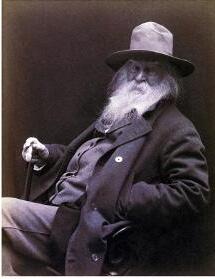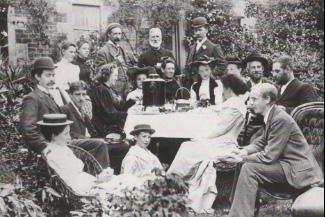
2 minute read
Whitmanites
boltons one-of-a-kind phenomenon
At the peak of the industrial revolution that swept across England’s ‘satanic mills’, and in the midst of the picturesque landscapes of northern towns, an unexpected friendship blossomed between a group of Boltonians and one of the greatest American poets, Walt Whitman.
Advertisement

The overseas correspondence with the bard started in 1887 when two friends, J.W. Wallace, an architect’s assistant and Dr John Johnston, a reputable local GP, sent an emotional letter to Whitman wishing him a happy birthday and expressing their ‘gratitude and reverence’ for his teaching which, ‘as a veritable gospel’, brought ‘glad tidings of great joy’ to them.
But who was Walt Whitman and why did the laureate strike a chord with the English fans?
Walt Whitman is a celebrated 19th century American poet, essayist and journalist who pioneered free verse in poetry and promoted transcendentalism and deism in his work.
BY IVANA FLETCHER
His first collection of poems ‘The Leaves of Grass’ (1855) captures what it meant to be a modern American at the end of the 19th century. In one of the most famous poems from the collection, ‘The Song of Myself’, Whitman invites the readers to celebrate their existence in simplicity and connection with nature. His poetry was quite controversial at the time for its overly sensual descriptions and sexual connotations.
It is not difficult to imagine how Whitman’s poetry had a profound and deep impact on the lives of two Boltonian friends, Wallace and Johnston. Whitman’s expression in an open, free verse was different to his English contemporaries, it was the right food for the perceptive and open-minded professionals who needed to escape the drudging life in a dreary industrial Bolton. The immaculate and untouched nature that surrounded and still surrounds the town was the perfect backdrop for experiencing the embodiment of Walt’s sultry verses. No wonder that soon others joined the new society not of a dead but a very much living poet.
As the group grew, attracting more and more members such as the prominent architect John Ormrod, so did the frequency of their correspondences with ‘the master’ whose life was equally enriched by this unique friendship. At first, the group met regularly in Wallace’s house on Eagle street and they called themselves ‘The Eagle Street College’ where they discussed and read Whitman’s work. When Wallace moved to a cottage in Adlington near the West Pennine Moors, his new home became an international hub for political and cultural discussions where the socialist and anarchistic ideas took place, and where both the host, Wallace and Dr Johnston shared the experiences of their travels across the Atlantic when visiting the bard.

Once a year, on Whitman’s birthday, May 31st, the group would walk to Rivington and have garden parties at John Ormond’s house at Walker Fold passing around a ‘loving cup’ gifted to them by Whitman’s American friends, filled with spiced wine and adorning their jackets with the sprig of lilac, Whitman’s favourite. This tradition and the group’s regular meetings continued after the poet’s death, even during the First World War, but died off over the subsequent 30 years.

The tradition was again revived in the 1980s and now the 21st century Whitmanites meet once a year for a traditional walk from Barrow Bridge up to Walker Fold where they share a picnic and drink the spiced claret from a loving cup once more.
It is still fascinating to think that such comradeship took place in Bolton, but it is not to underestimate the power of the working class minds who celebrated the transcendent beauty of their surroundings and fed on the thoughts of one great poet.

